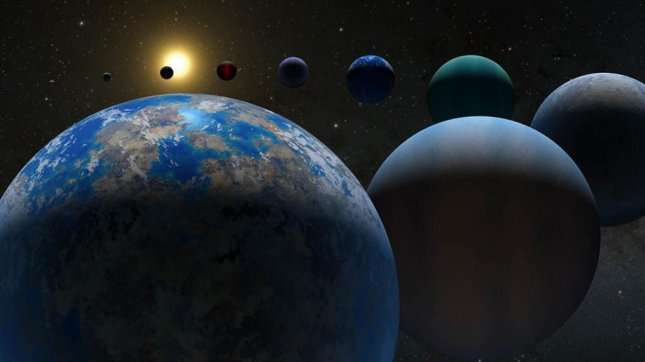
March 23 (UPI) — The total number of confirmed planets in the universe ticked past 5,000 this week with the addition of 65 exoplanets, NASA says.
The space agency said the confirmed planets are just a small fraction of the billions of planets the Milky Way likely holds. That number only increases when considering galaxies outside our own.
The newly added exoplanets — worlds that exist outside our solar system — were confirmed using multiple detection methods and through peer-reviewed scientific papers, NASA said. They were added to the NASA Exoplanet Archive on Monday.
“It’s not just a number,” Jessie Christiansen, science lead for the archive and a research scientist with the NASA Exoplanet Science Institute at Caltech in Pasadena, Calif., said in a statement. “Each one of them is a new world, a brand-new planet. I get excited about every one because we don’t know anything about them.”
Of all the exoplanets discovered outside our solar system, many include small, rocky worlds like Earth, gas giants larger than Jupiter, so-called “hot Jupiters” that rotate close to their stars, super Earths, mini Neptunes and some that continue to revolve around collapsed, dead stars.
The first planets confirmed outside our solar system were discovered in 1992, with the identification of three planets orbiting a neutron star known as a pulsar. Pulsars rotate incredibly fast and burst periodically with “searing radiation,” NASA said.
Wolszczan predicted the newly launched James Webb Space Telescope will be the start of a new era of discovery that will add even more planets to the NASA Exoplanet Archive.
The JWST, which was launched Dec. 25, is the most powerful telescope ever launched into space and will use infrared technology to view objects farther away from Earth than ever before. Scientists hope the telescope will send back images of the universe’s first stars and galaxies — and with that, exoplanets.
“To my thinking, it is inevitable that we’ll find some kind of life somewhere — most likely of some primitive kind,” Wolszczan said.
Last week, NASA released the first image from the new telescope after sharpening its focus — a brilliant, blazing orange star called 2MASS J17554042+6551277. The photo also revealed multiple galaxies in the star’s background, none of which have been identified yet.



